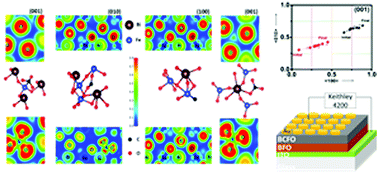The role of an unintentional carbon dopant in resolving the controversial conductivity aspects in BiFeO3
Abstract
Light elements like carbon may enter unintentionally into a material during material processing owing to their ubiquitous nature, and may significantly influence its observed electronic and magnetic properties. In the present work, the energetics and kinetics of carbon impurity related defects in BiFeO3 (BFO) are studied using first principles calculations in order to gain insight into the ongoing controversial aspects of conductivity of BFO. The results suggest that oxygen deficient conditions provide a favorable chemical environment for incorporation of carbon in BFO. Calculations based on the formation energy predict that carbon can spontaneously occupy interstitials, O, and Fe sites in BFO (where it is found to introduce impurity induced shallow acceptor type states at an energy of 0.05 eV above the valence band maximum). Carbon occupying cationic sites (CBi and CFe) tends to ionize their vacancies (VBi and VFe), resulting in the formation of a CO3 cluster, whereas it induces localized electron traps with energy levels composed of impurity states near the center of the band gap (0.9 eV above the valence band maximum) when occupying interstitial sites in BFO. An understanding of the migration of C impurity in BFO is developed, which suggests the favorable incorporation of carbon impurity via a vacancy mechanism. In order to confirm the theoretical results, experimental studies are carried out where BFO and carbon doped BFO (BCFO) thin films are grown by the pulsed laser deposition technique. Polycrystalline pure phase (R3c) thin films of BFO and BCFO are obtained. The presence of defect states in the deposited thin films is optically analyzed by the photoluminescence (PL) technique. In order to highlight the critical role of carbon in modifying the electrical conductivity of BFO, a BCFO/BFO/ITO based p–i–n heterojunction is prepared. The electrical characteristics depict remarkable rectifying characteristics, thus suggesting the p-type nature of carbon dopant in otherwise intrinsic BFO.



 Please wait while we load your content...
Please wait while we load your content...